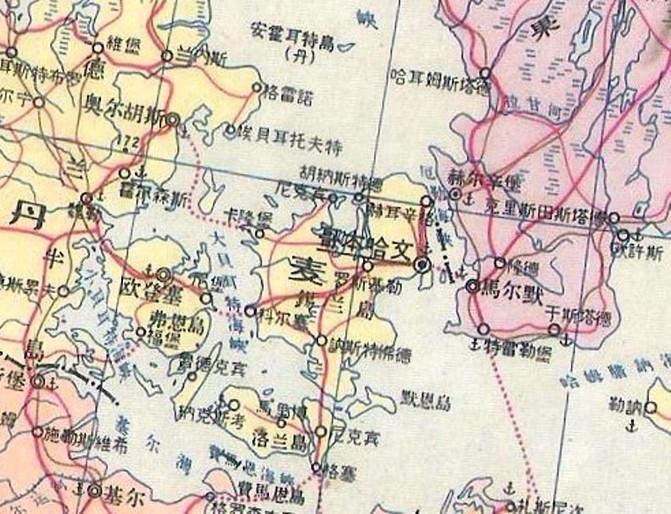Days: 10 days
Time: June
Per capita: 26000 yuan
With whom: with friends
Play with group
The author went to these places
Sweden
Denmark
Lake Vernon
stockholm city hall
LADA
Published on September 23, 2014 10:05
Appendix 1: Thirty Years War
The 30-year war is the first all European war. It is a large-scale international war involving all Europe evolved from the civil war of the Holy Roman Empire. The war was carried out between the two bloc countries, the Habsburg alliance and the anti Habsburg alliance. The Habsburg alliance is composed of the Habsburg dynasty of Austria, the Habsburg dynasty of Spain and the Catholic princes of Germany. It is supported by Poland and Lithuania. The anti Habsburg alliance was composed of France, Sweden, Denmark, the Netherlands and other countries. It was supported by the German Protestant princes, and Britain also participated in the alliance to a certain extent. The war was the product of European countries' struggle for interests, establishment of hegemony and intensification of religious disputes. The war started with the Bohemian people's resistance to the Austrian Habsburg royal rule, and ended with the defeat of the Habsburg royal family and the signing of the peace treaty of Westphalia. This war wiped out about 60% of the population of Germanic States, 65% of the population of Pomerania and 25% of the population of Silesia, among which nearly half of the males died.
In 1618, the Czech people could not bear the national oppression of the Habsburg dynasty, and held an uprising in Prague. Since then, the 30-year war began. The first stage of the war was the Czech stage (1619-1623), which ended with the victory of the Catholic alliance represented by the Habsburg royal family. The second stage of the war was the Danish stage (1625-1629), which ended with the power of the Holy Roman emperor extended to the Baltic Sea. The third stage of the war was Sweden (1630-1635), which ended with the victory of emperor Habsburg. The fourth stage of the war was the Europe wide scuffle (1936-1648). In March 1645, the Swedish army defeated the Holy Roman Imperial Army in Bohemia. In August of that year, the French army defeated the Holy Roman Imperial Army in naringen, and most of the German territory of the Holy Roman emperor was occupied. In 1648, the Allied forces of France and Switzerland met again in chusmanshausen and Reims, winning the Holy Roman Imperial Army. But by this time, both sides had been greatly weakened. As a result, in October of that year, the two sides reached a settlement agreement and concluded two peace treaties, the Treaty of osnabluk and the peace treaty of Minster, collectively known as the peace treaty of Westphalia. So far, the 30-year war was completely ended.
King Gustav II Adolf of Sweden took part in the 30-year war in 1630. In November 1632, the battle of Lucen broke out in the 30-year war. Gustav II led the Swedish alliance with Protestant princes and fought against the Holy Roman Imperial Army led by Wallenstein in the fog. Although Sweden won again, the commander-in-chief of Gustav II was unfortunately killed.
Albrecht Wallenstein was a German Czech aristocrat, a Catholic, and the military commander of the Holy Roman Empire in the thirty years' War.
Appendix 2: The Legend of the goddess gifion and the island of Cymbidium
Gifion is a goddess in Nordic mythology. She never married, but gave birth to four sons with Hercules. It is said that long ago, Danes did not have their own land, and the guardian goddess gifion asked the king of Sweden to grant a piece of land. The king promised the goddess gifion that she could dig out a piece of land from Sweden, but only one day and one night. So the goddess gifion transformed her four sons into four powerful cows. She ploughed hard for a day, dug a large piece of land from Sweden with a plow, and moved it to the sea. From then on, a lake Wiener was left on the territory of Sweden, and the land dug up is now the island of ceyland in Denmark. From the map, the coastline of Ceylon island and the shape of Lake Vernon are very similar indeed. This is the origin of the legendary island of Cymbidium. Gefion is also regarded as the goddess of Genesis in Denmark.
Appendix 3: Dala Trojan horse
The origin of Dala Trojan horse is just a warm story about Aizi: around the 17th century, in dalana area of central Sweden, where the virgin forest is dense, people mostly cut wood for a living. Once the workers enter the virgin forest, they usually stay for ten days and a half months, or even half a year at most. When loggers miss their children, some people want to carve some small toys out of wood, which can be used as gifts for children when they go home. The most representative toy is the Trojan horse. The reason why horse became the best model of lumberjack at that time was that at that time, the log harvested by lumberjack had to be transported outside mainly by horse. In order to travel, carry goods and do farm work, almost every family in Sweden raises horses. So the horse became the closest partner of the lumberjack and his family. When the wooden horse carved by dalana woodcutter gradually became popular all over the country, people named it after its origin.
Appendix 4: puppet drama the war between Sweden and Denmark
After the end of a fierce battle of Denmark's victory over Sweden in the 17th century, a Danish soldier preparing to rest and drink water suddenly heard the cry of a seriously injured Swedish soldier. The Danish soldier went over and put the kettle in the wounded man's mouth. I didn't expect that the Swede stabbed him in the arm“ Hi! You should repay me like this. " The Danish soldier said, "I used to give you a whole pot of water, but now I can only give you half." Later, the king found out about it. He summoned the Danish soldier and asked him why he didn't kill the ungrateful guy? "I don't want to kill the wounded," he replied easily
(it is meaningful to put this puppet drama story in Stockholm City Hall, which praises the noble Danish soldiers and the unrighteous Swedish soldiers.)
Appendix 5: Danish Royal History
King gaum was the first monarch of Denmark. His date of birth was unknown and he died in 940. After his death, his son Haral succeeded to the throne. For more than a thousand years, there were two dynasties in the succession of Danish royal family. One is the Orenburg Dynasty, the other is the gruxburg Dynasty. From the old king of gaum to 1448, Denmark's throne passed on for about five centuries, with 32 kings and one queen.
Since 1448, Denmark's throne passed to the Duke of Christian of Orenburg, and the Orenburg Dynasty began. Christian became King Christian I of Denmark. The Orenburg Dynasty lasted for more than four centuries and experienced 16 kings until the end of the dynasty in 1863.
After that, Denmark's throne was passed on to Prince Christian, the son of Duke William of gruxburg. He became King Christian IX of Denmark and started the gruxburg Dynasty. The dynasty has a history of more than 130 years. Today's Queen Margaret II of Denmark is the fifth generation monarch of the gruxburg Dynasty.
Oldenburg Dynasty:
Christian I Hans Christian II Frederick I
Christian III Frederick II Christian IV
Frederick III Christian V Frederick IV
Christian VI Frederick V Christian VII
Frederick VI Christian VIII Frederick VII
The gruxburg Dynasty:
Christian IX Frederick VIII Christian x
Frederick IX, Margaret II

Ceylon Island
Lake Vernon
LADA Trojan horse
Gustav Adolf II






Leave a Comment